
Salty Sam’s Fun Blog for Children
Number 175
The London Underground
Hello Everyone

When we go up to London to visit my Cockney cousin Smiley Sid, one of the things Bill and Bob love to do best, is travel on the Underground. We have old smugglers’ tunnels in Rocky Bay but they are not nearly as big as the tunnels under London.
The cheapest and easiest way to travel around London is to buy an Oyster Card; you don’t have to be a Londoner to have one.
We avoid the rush hour – we call it the ‘crush hour’ – because the trains get very crowded.
lt is very exciting to stand on the platform waiting for a train. You can hear it rumbling along the tunnel far in the distance; it is a very eerie noise.
Before the train appears you can see its lights shining on the rails in front of it and the rumbling gets louder.
The rumbling gets louder and louder and then the train appears.
Bill and Bob also like watching the tiny sooty-coloured mice that run about under the tracks – but you should never lean over to watch them. You have to stand well back from the platform edge because the trains come in very fast.
Newer stations have clear walls to stop people falling onto the tracks. They have doors in them that only open when a train is in the station.
Other older ones have pits in the middle of the track you can hide in if you accidentally fall off the platform and there is no time to get back onto it before the train comes.
The rails are all electrified and very dangerous to touch.
The London Underground is a system of electric trains which transport millions of people around London. lt is a good way to avoid the traffic jams above.
lt is the oldest underground railway in the world. When it started running in 1863 it was called the Metropolitan Railway.
The word metropolitan means big and important city – there is still a line called the Metropolitan Line today but there are many lines and they all have their own name. There are nearly 300 stations.
Some of them look more or less as they were built many years ago and are very atmospheric with their old names still readable on the wall tiles, and some of them look ultra-modern and have up to the minute news flashes on electronic notices on the walls.
There are about 40 old, abandoned stations which are now eerily empty of passengers.
ln the Second World War, people used to take shelter during bombing raids in the Underground, there were even bunk beds along the platforms. And if there wasn’t enough room on the platforms, people slept on the tracks. Never, had the Underground been more important to Londoners.

lt is very easy to find your way around the network. All the lines are colour-coded and the inside of the trains often seem to have coloured hand rails that match the colour of the line. There are maps on every platform and in every train. lf you find you have got on a train going in the wrong direction – don’t panic, just get out at the next station and go back again. ![]()
ln the beginning, there were steam trains running in these tunnels, and even today you will find soot inside your nose if you travel a long way on one of the older lines!
Some of the tunnels for the trains and the access tunnels for the people to get to the platforms are tube shaped. They are hot in the summer and cold in the winter but people use them because the underground is such a fast and convenient way of getting around. lt only takes two or three minutes to get between each station.
Properties near an underground station are more expensive because of it – you pay for the convenience.
Outside the centre of the city, the trains often run above ground level. Less than half the Underground is actually underground!
When the tunnels were first built, some buildings were demolished and pits were dug out. The track was constructed at the bottom of these pits and then the ground above the tunnel replaced; this is called a cut and cover method. Nowadays, tunnels can be bored by huge machines without disturbing the buildings above.
The first tunnels were dug by hand. Tunnelling under London was easy when digging through clay; it was soft but didn’t collapse; but tunnelling through pockets of sand and gravel was dangerous.
Digging shallow tunnels was difficult too, because of the huge number of water mains, gas mains and sewers under London. Deep tunnelling solved this problem. The World’s first deep-level tunnel was the Circle Line which took over 20 years to complete. The first section was opened in 1863. The carriages were wooden, gas lit and pulled by steam locomotives. A new section was added to the Circle Line in 2009.
You will notice that most of the system is north of the river. This is because there is a lot of underground water south of the river and engineers in the past could have problems with tunnels flooding. The Romans built Londinium on the north side of the river because the south bank was mostly boggy marsh at the time.
A lot of the stations have escalators running down to the platforms; these are some of the longest escalators in Europe and move very quickly. They have to move quickly because they have to transport 13,000 people an hour on them. Some stations have steps and some have lifts as well.
The staff were kitted out in new designer uniforms in 2014.
The lines began a 24 hours a day service on 19th August 2016 when the first night tubes started running. Two lines started running trains during the night for the first time in the Underground’s 153 year history with more lines to follow. The Jubilee Line started running all night on 7th October 2016 to give people going out at night at the weekend a train to go home on.
The scheme was designed to make London a 24 hour a day city; hoping to give its economy a huge boost.
lf you travel on the London Underground, the schematic diagram of the tube system which is called the Standard Tube Map is easy to use. The only thing that you have to remember is that is can give you a false impression of how far away stations are from each other.
lf you need to plan a journey on the London Underground, you can find maps on the Transport for London website.
Bye bye everyone – don’t forget to subscribe to my blog!
lf you like my blog, please support it by telling all your friends and followers about it.
Thank you!
And see you again next Fun Friday!
Love and kisses
Salty Sam

www.christina-sinclair.com


Bill and Bob’s Joke of the Week![]()
![]()
Bill: What did one escalator say to the other escalator?
Bob: l don’t know. What did one escalator say to the other escalator?
Bill: l think l’m coming down with something.

Salty Sam © Christina Sinclair 2015
Unauthorized use and/or duplication of material from this blog without express and written permission from this blog’s author and owner is strictly prohibited.
Links may be used to www.christina-sinclair.com

Picture Gallery

An underground train
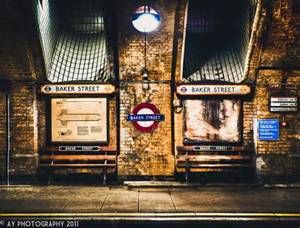 Baker Street Underground Station is very atmospheric
Baker Street Underground Station is very atmospheric
 During WWII people even lay on the tracks if there wasn’t enough room on the platforms
During WWII people even lay on the tracks if there wasn’t enough room on the platforms
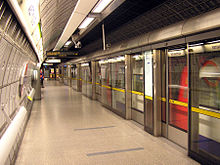 The platform at Westminster is very modern
The platform at Westminster is very modern

The escalators at Canary Wharf
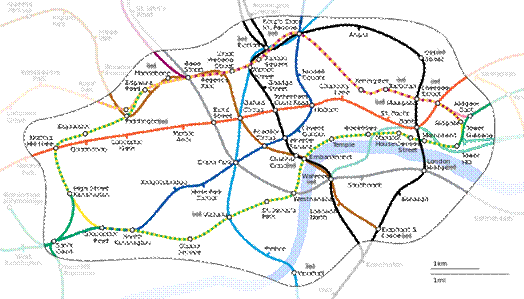
A realistic map of the centre part of the system

The schematic diagram map
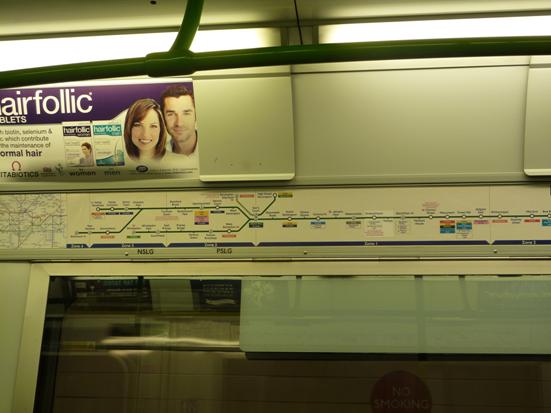 There are maps inside every train so that you can check to see where you are
There are maps inside every train so that you can check to see where you are
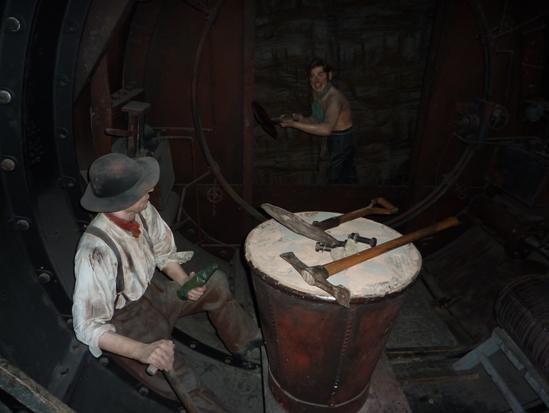
A hundred years ago tunnels were dug by hand
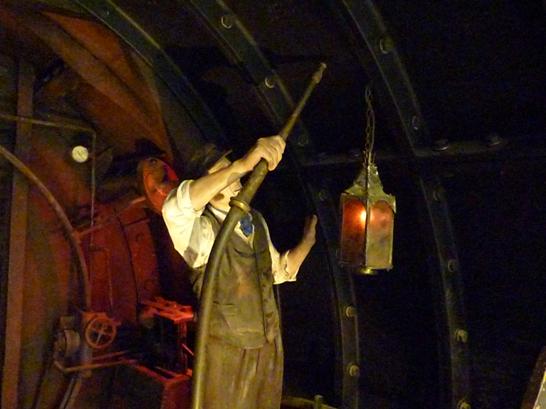
The work place was dark and dangerous
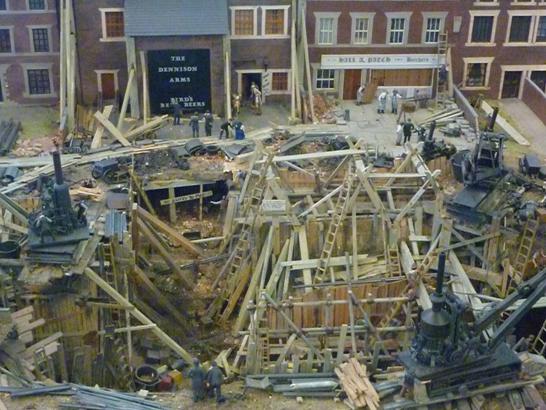 Tunnelling caused a lot of disruption because it was so close to buildings where people lived and worked
Tunnelling caused a lot of disruption because it was so close to buildings where people lived and worked
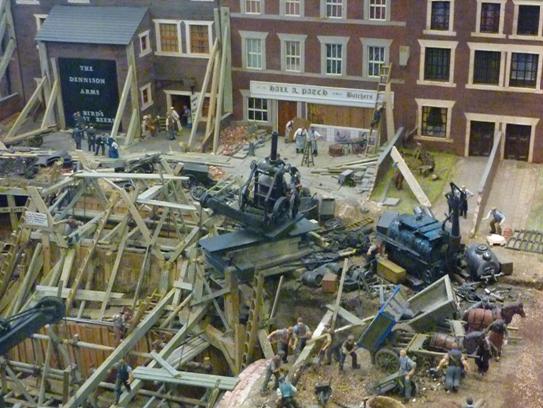
Heavy machinery and horses were used
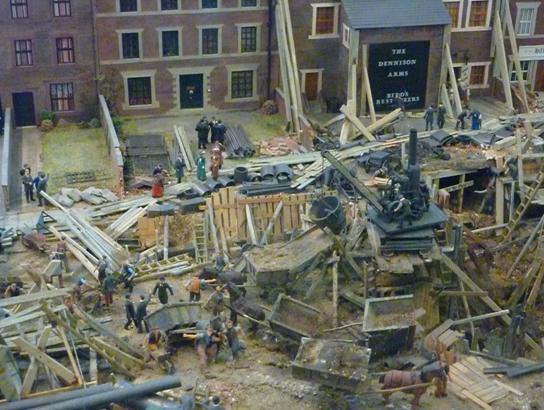
This model shows how the ground was excavated
(London Transport Museum in London)
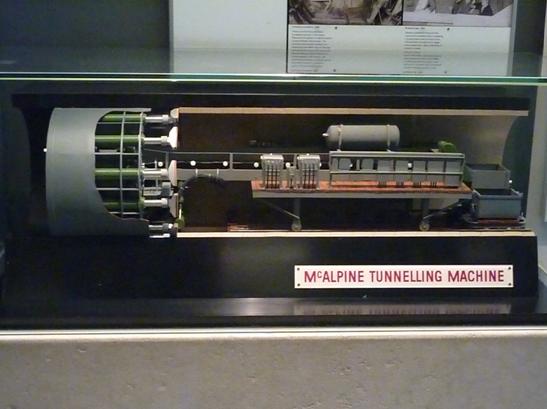
A 1964 spinning digger
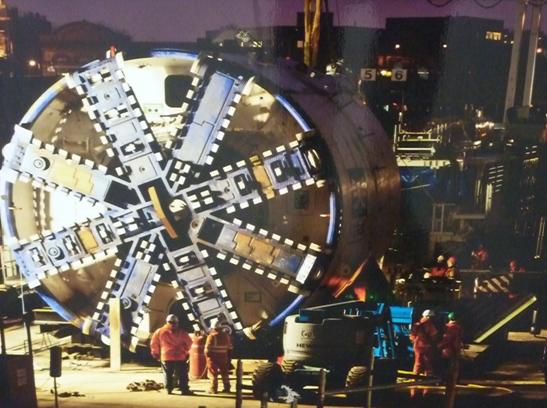
Great boring machines are used nowadays to dig tunnels
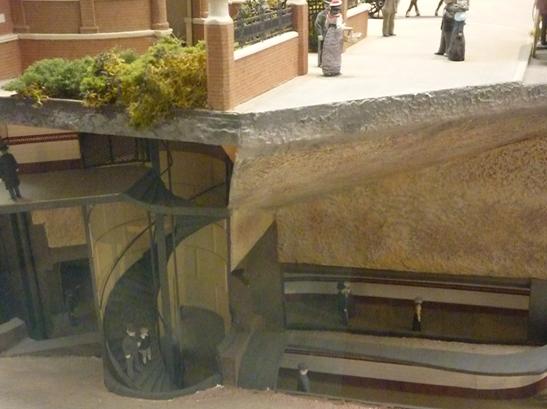
People would originally descend to platforms via staircases
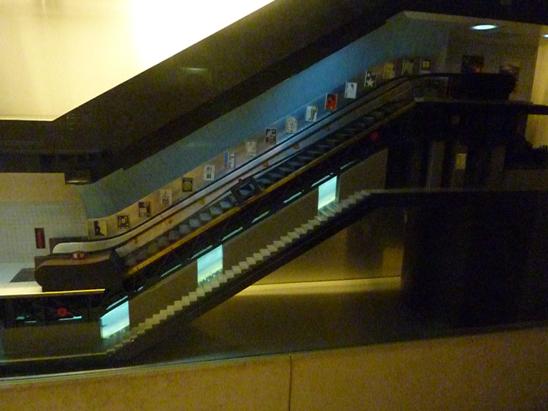 Escalators were built in the 1930s and modernized in 1960s
Escalators were built in the 1930s and modernized in 1960s
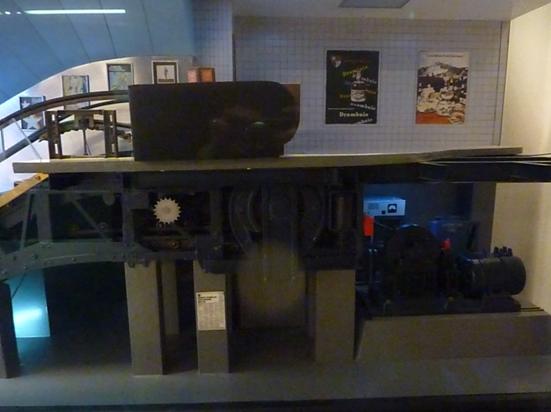
After a fire at King’s Cross in 1987 which was started by a cigarette igniting dirt and grease under the escalator,
smoking was banned on the Underground
Wooden panels and escalators were replaced with metal ones
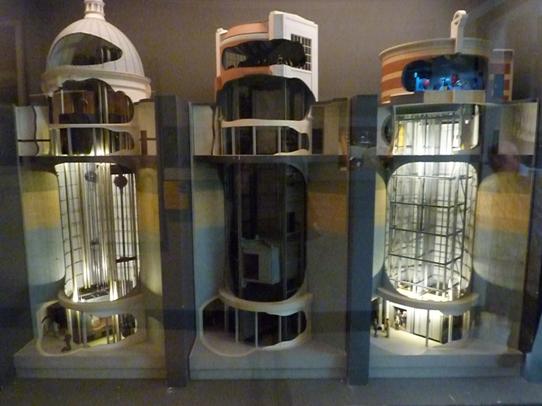
Modern lifts at Borough Station
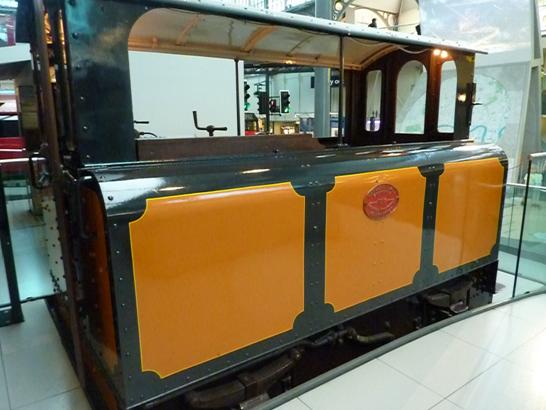
An 1890 electric train
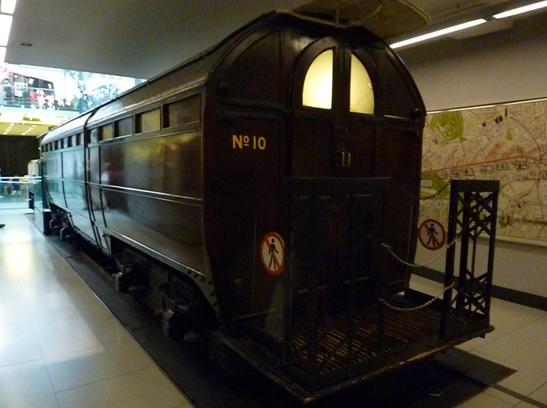
The carriages it pulled were made from wood
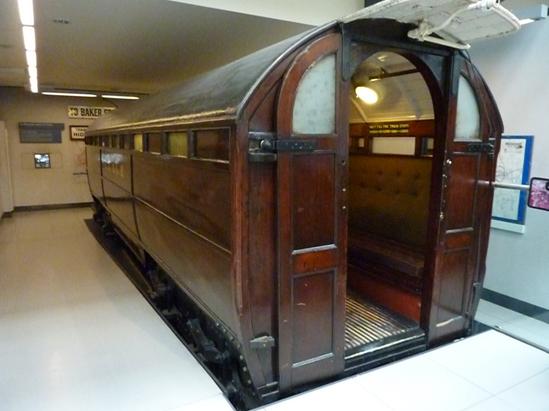
The carriages had a door at each end
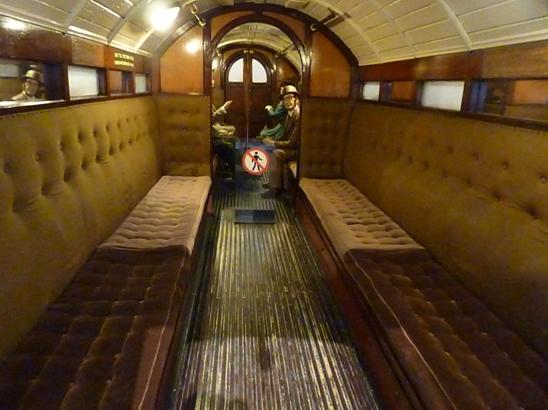 The insides were very claustrophobic and some people could not cope with them
The insides were very claustrophobic and some people could not cope with them
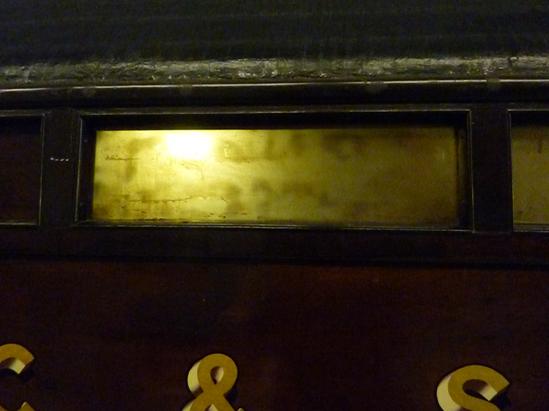
The windows were tiny and you couldn’t see through them
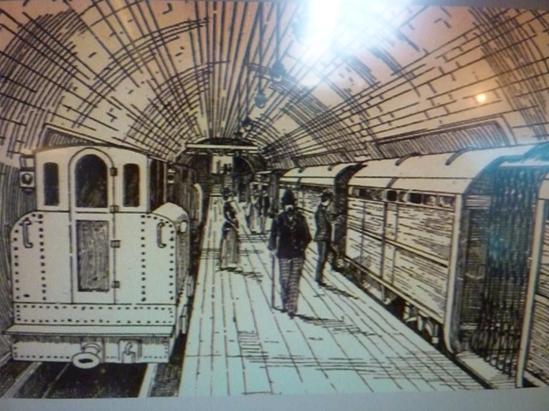 There were doors at each end of the carriages and small platforms between the carriages
There were doors at each end of the carriages and small platforms between the carriages
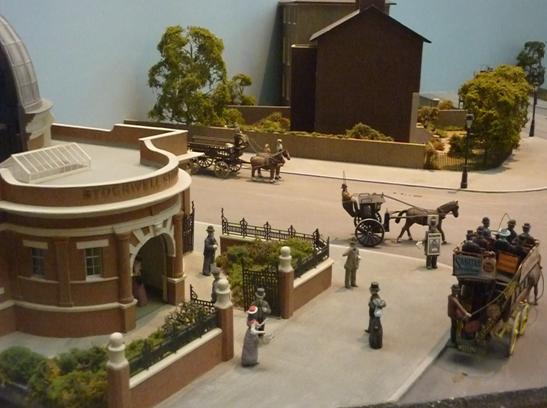
A model of the entrance to Stockwell Station
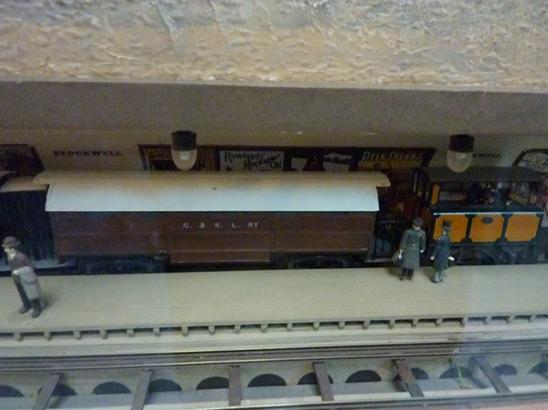 The electric train ran between the City of London and Stockwell
The electric train ran between the City of London and Stockwell
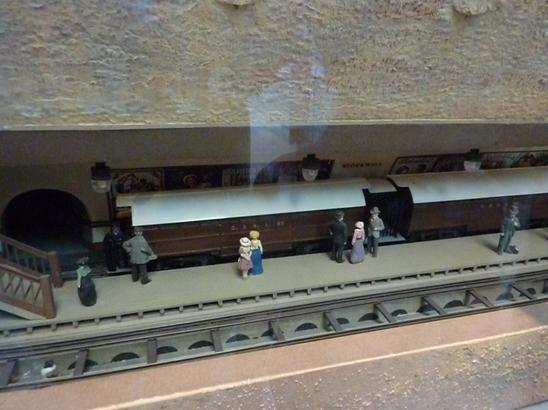 The City and South London Railway ran under the River Thames
The City and South London Railway ran under the River Thames
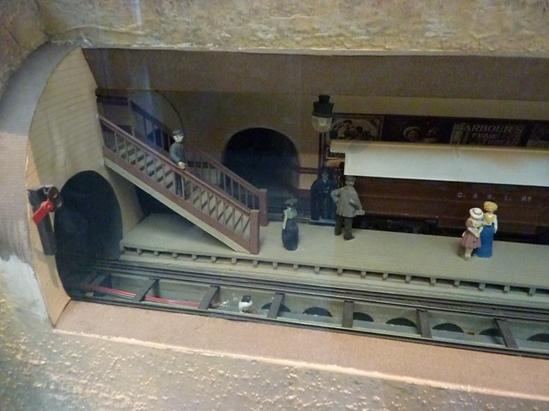
Stockwell Station
(Model in the London Transport Museum)
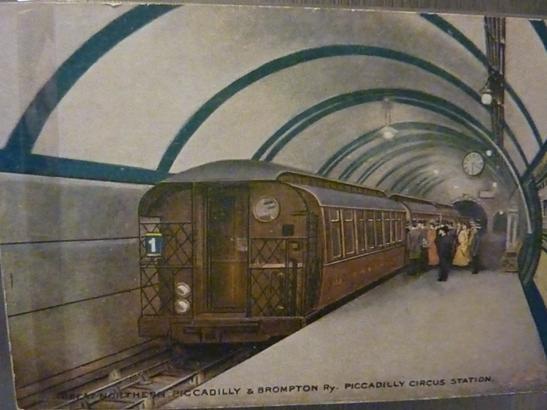
Electric trains were cleaner than steam trains
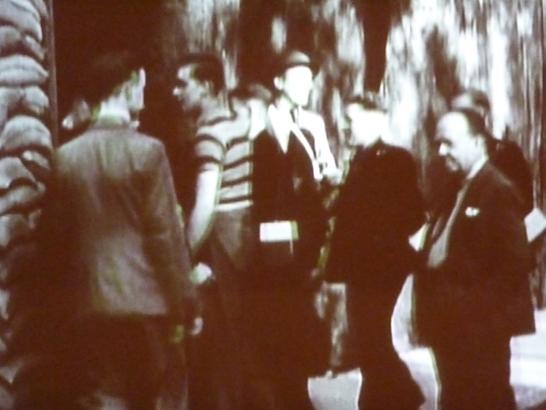
People rushed into the tube stations during an air raid of WWII
The doorways were protected with sand bags
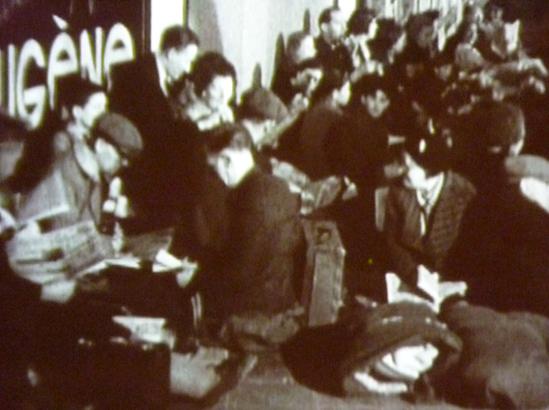 People brought blankets and suitcases full of belongings
People brought blankets and suitcases full of belongings
and waited for the ‘all clear’ siren to sound once the air raid was over
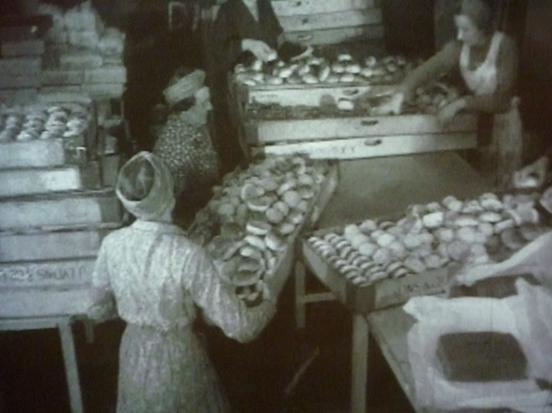 Underground stations had one or two canteens selling food to people who had to spend a long time underground during air raids
Underground stations had one or two canteens selling food to people who had to spend a long time underground during air raids
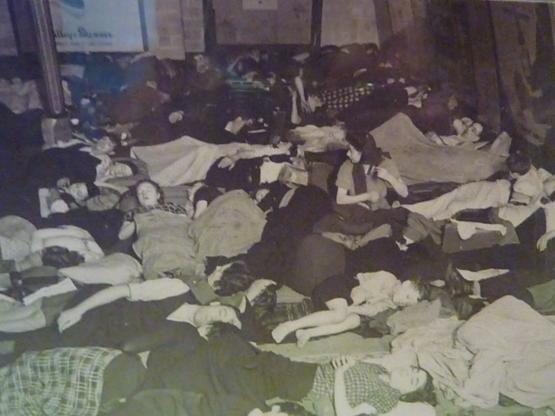
People slept on the platforms at night during air raids
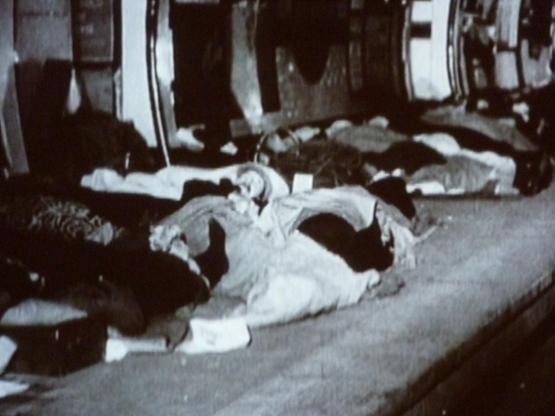 Only 132 people were killed as they sheltered in the Underground during WWII
Only 132 people were killed as they sheltered in the Underground during WWII
68 of those were at Balham – a plaque on the wall at the top of the staircase commemorates them
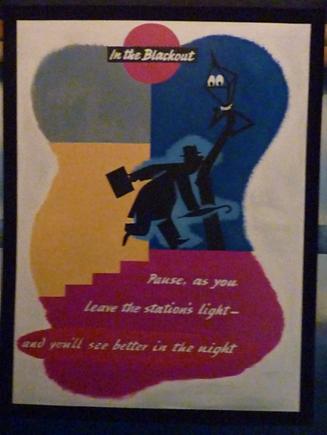
A poster warning people to let their eyes adjust to the darkness of the street when they left the station – there was a blackout in all places because it was illegal to show any light at night – there were no street lamps or lights shining from any windows
Lights would have let enemy aircraft know the location of human habitation which of course would be a signal to them to drop bombs
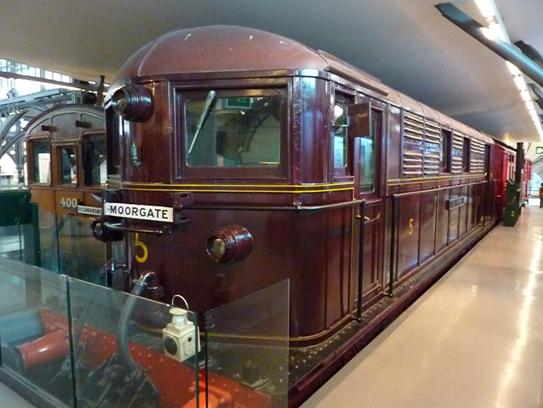
A 1924 tube train
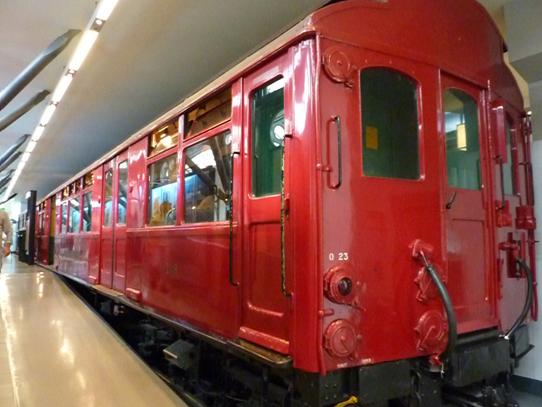
A 1923 tube train in operation until 1971
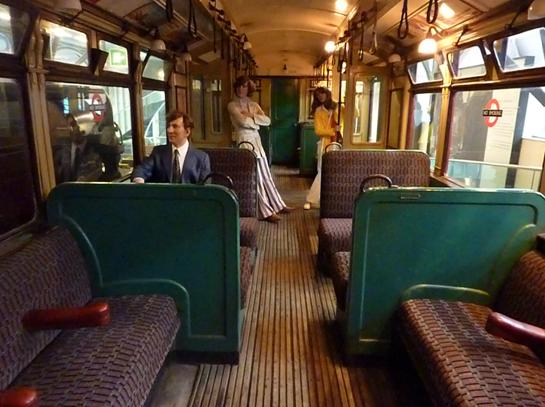
The seats are deep and comfortable
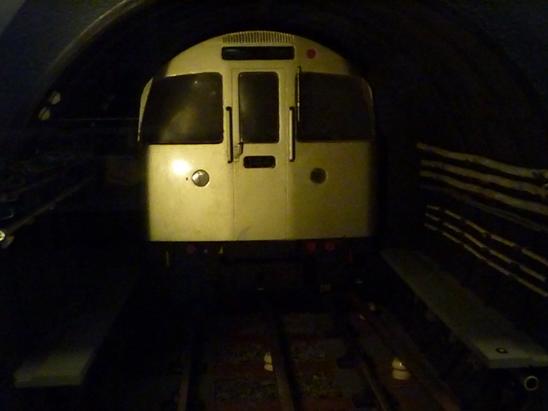 There isn’t much space around the trains as they travel through the tunnels
There isn’t much space around the trains as they travel through the tunnels

A 1960s tube train

Inside a 1960s tube train with a wooden slatted floor
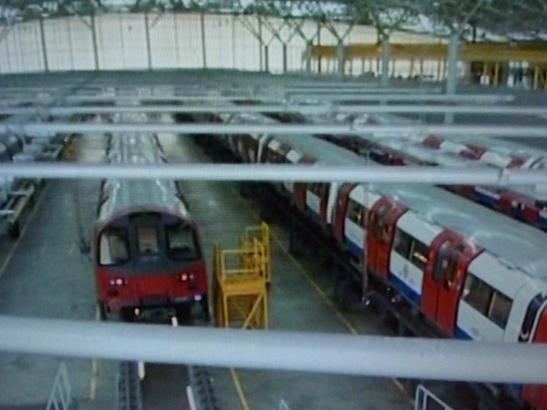
Modern underground trains in a depot

You can see the shine of the train lights on the rails long before you can see the train
Some of these dark tunnels still smell of soot –
you can start to smell it once you start going down the steps to the platform
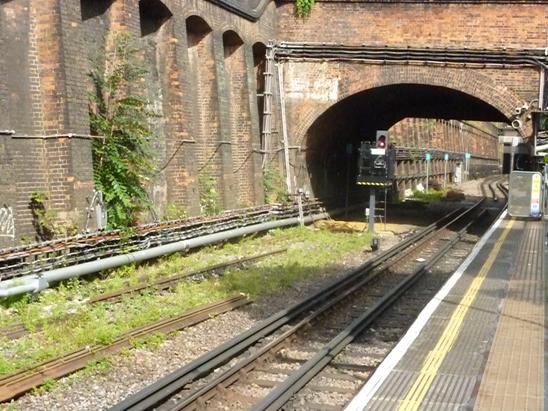 A huge percentage of the London Underground network is actually above ground
A huge percentage of the London Underground network is actually above ground
 Sometimes the rails run below street level and sometimes above roof level
Sometimes the rails run below street level and sometimes above roof level

Some trains run past windows of houses
 I think these trains left on a rooftop have reached the end of the line!
I think these trains left on a rooftop have reached the end of the line! ![]()

A modern driver’s cab
(Take a test drive at the London Transport Museum)
 The view from the driver’s cab as he/she approaches a station
The view from the driver’s cab as he/she approaches a station
 Smart signalling is a modern concept where a central computer knows where all the underground trains are –
Smart signalling is a modern concept where a central computer knows where all the underground trains are –
the computer can control a train’s speed and puts a safe distance between trains
(this distance alters with a train’s speed)
This system can allow more trains on the system but also increases safety


 THE SALTY SAM NEWS DESK
THE SALTY SAM NEWS DESK

Lots of people come to London to visit. Oysters cards can be bought online before coming to London and taxis can be found everywhere to help you travel around.
Lots of people visit my blog every day too – from 134 territories.
I think my blog posts have travelled to even more places than I have!
You are all welcome!!!
If you do not see your country here, please let me know.
These are the territories – in no particular order…
- GB
- US
- China
- Brazil
- Australia
- Sweden
- Peru
- Colombia
- Italy
- Germany
- Portugal
- France
- Tunisia
- Netherlands
- Romania
- Czech Republic
- Russia
- Ukraine
- Serbia
- Canada
- Latvia
- Poland
- Spain
- Lithuania
- Nigeria
- Puerto Rico
- Argentina
- Mexico
- Switzerland
- South Africa
- Belgium
- Finland
- Slovenia
- Israel
- Chile
- Ecuador
- Venezuela
- Hungary
- Greece
- Moldova
- Montenegro
- Jamaica
- Bulgaria
- Panama
- Turkey
- Cyprus
- Estonia
- Senegal
- UAE
- Korea
- Japan
- Serbia
- Ireland
- Austria
- Costa Rica
- Belarus
- Denmark
- Aruba
- Armenia
- Luxembourg
- Paraguay
- Norway
- Algeria
- Kazakhstan
- Egypt
- Slovakia
- Zimbabwe
- Iceland
- Cape Verde
- Seychelles
- Viet Nam
- Fiji
- Somalia
- Sri Lanka
- Namibia
- Tanzania
- Hong Kong
- India
- Gibraltar
- Nepal
- Thailand
- Philippines
- Bangladesh
- Belize
- Dominica
- Guam
- British Virgin Islands
- Saudi Arabia
- Bosnia and Herzegovina
- Myanmar
- Mauritius
- Malaysia
- Haiti
- Georgia
- Bahamas
- Uruguay
- Bermuda
- Oman
- Singapore
- Pakistan
- Lebanon
- Cambodia
- Guyana
- Jordan
- Kuwait
- Papua New Guinea
- Malaysia
- Iran
- Mongolia
- Iceland
- Sierra Leone
- Taiwan
- Indonesia
- Albania
- Iraq
- Morocco
- Jersey
- Kenya
- Zambia
- Barbados
- Qatar
- Mozambique
- Liberia
- St Vincent and the Grenadines
- Guadeloupe
- Antigua and Barbuda
- Malta
- Brunei
- Darussalam
- Falkland Islands
- Cameroons
- Congo
- Laos
- Guatemala

Emily discovered a way she could easily make a shoulder bag for her 12” doll this week.
Actually, you can just use an off-cut of plastic canvas of any small size to make one yourself.
The bag in the picture was made from two pieces of canvas 6 holes by 9 holes decorated in double cross stitch. But you can make your own design.
NEWSDESK MINIMAKE
A PLASTIC CANVAS SHOULDER BAG FOR A 12” DOLL
Work 8 diagonal crosses on each piece in a length of knitting yarn.
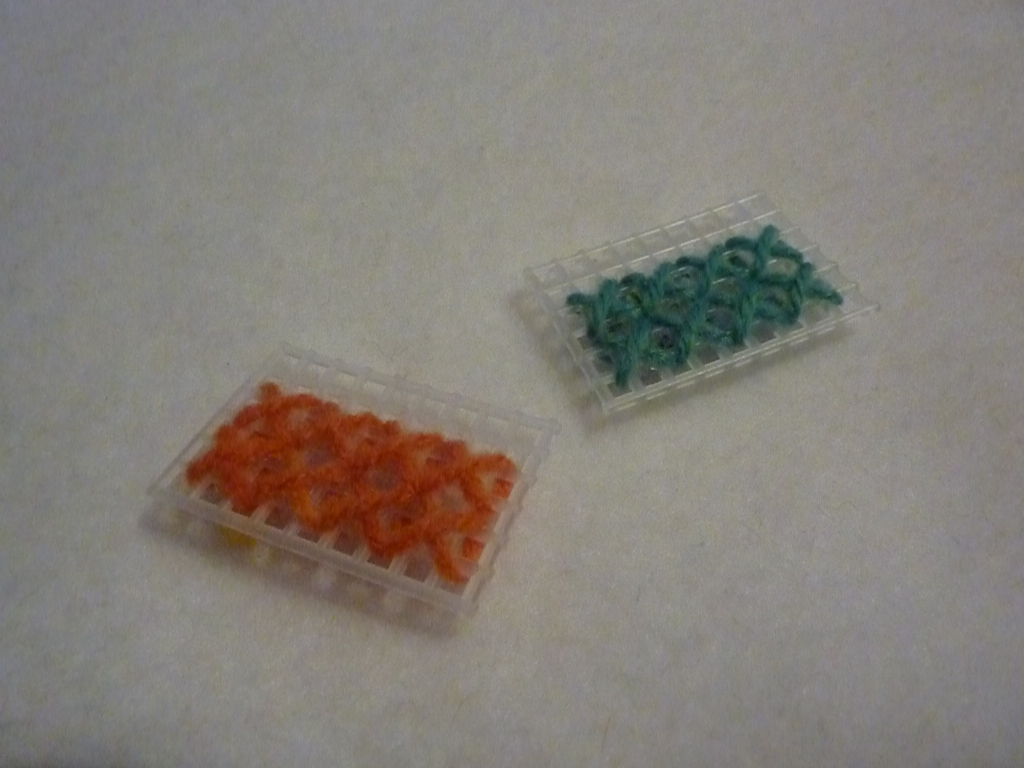
Put upright crosses on top in a contrasting colour.
Work 2 rows of tent stitch above these double cross stitches.
Then sew the two pieces of plastic together along the sides and bottom.
Attach a length of yarn to the top corners to make a strap.
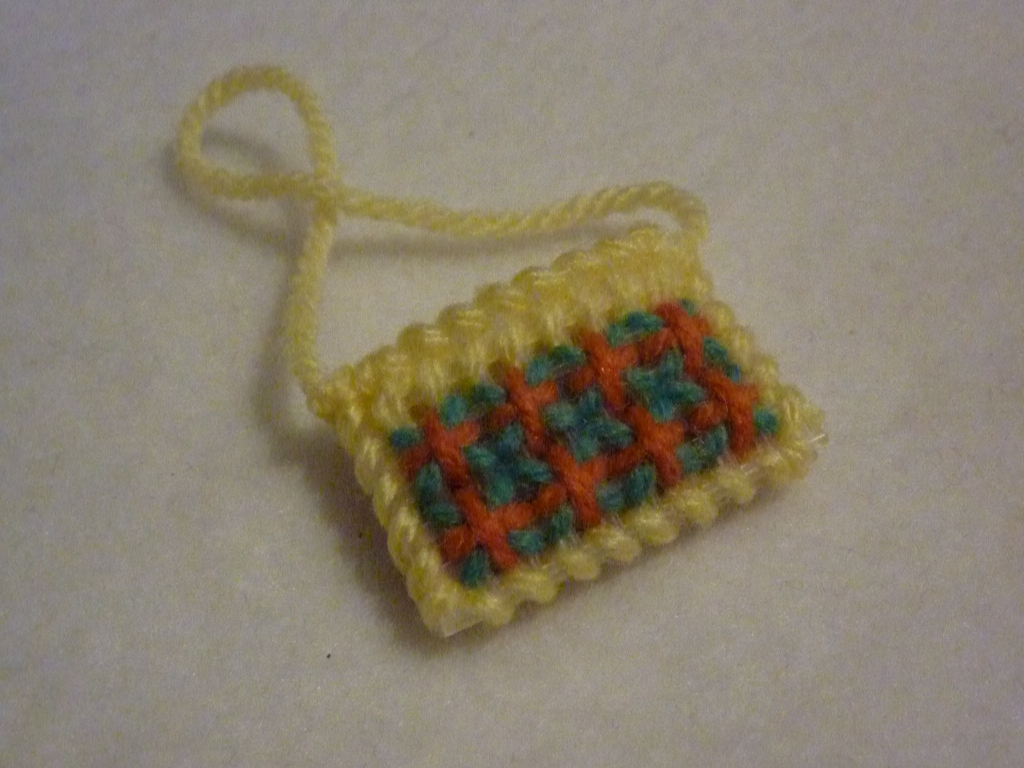

*********************
TO ADVERTISE ON THIS BLOG
PLEASE CONTACT:
christina.sinclair.ads@aol.co.uk
*********************


Quick Quiz
Do you know what these phrases mean?
- a slowcoach
- to paddle one’s own canoe
- the gravy train
- a train of thought
- to go overboard over something
- full steam ahead!
- to be all steamed up


BLOW MY FOGHORN!!!

PLUS
Salty Sam fans can join in with their comments and share them with children all over the world. You will need to ask permission if you are not an adult.
Enter your e-mail address to subscribe to my blog and receive new Salty Sam Blog Posts for free by e-mail every week. Your address will be kept private and will not be shared with any third party.
Sign me up at the side bar




lt’s the Weekend!
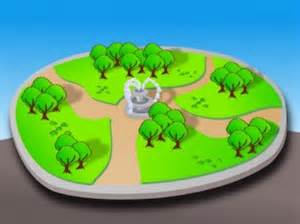
HOW TO MAKE A FOUNTAlN FOR YOUR DOLLS’ HOUSE
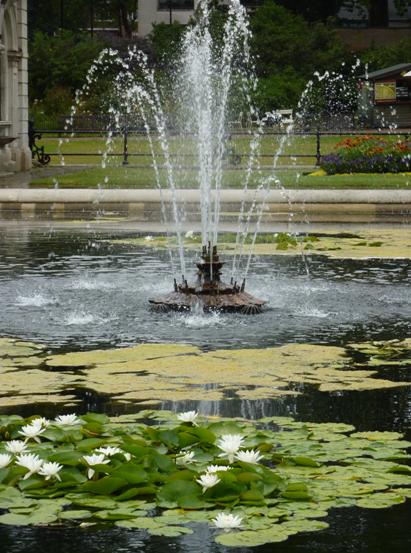
Fountain in Kensington Gardens
Simply take the top of a washing up liquid bottle and stick it to the top of a squeezy sauce bottle lid or a lid that is bigger than the washing up liquid bottle top.
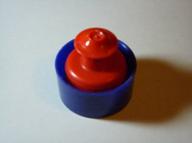
Cover in white or cream paint with a little sand mixed in with it to create texture or use silver paint.
If you are using the kind of paint that won’t stick to plastic, mix some PVA glue in with it.
The white or cream-coloured fountain will look as though it is made from stone and the silver one as though it is made from metal.
It will make the front garden of any dolls’ house look very upmarket!
You could also make a barbeque out of appropriately-shaped bottle tops and paint it silver to go in the garden featured in Blog Post 137.
If you want to create a shrub border around your fountain, cut a circle of dark brown felt slightly larger than the base of your fountain and sew loops of green yarn onto the felt or stick lumps of chopped up green washing-up sponge onto it.
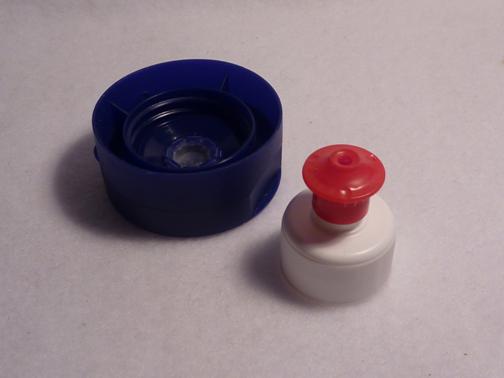


Please note that the material on this blog is for personal use and for use in classrooms only.
It is a copyright infringement and, therefore, illegal under international law to sell items made with these patterns.
Use of the toys and projects is at your own risk.
©Christina Sinclair Designs 2015


Quick Quiz Answers
- a slowcoach – a slow person
- to paddle one’s own canoe – to act independently and choose your own road in life
- the gravy train – to be in a good place to meet people who can help you
- a train of thought – to ponder on a subject for a while
- to go overboard over something – to be enthusiastic or too enthusiastic about something
- full steam ahead! – go ahead as fast as you can
- to be all steamed up – to be upset or angry




continuously I read this blog
posts which I am reading at this place.
l am glad you like my blog. Thank you for your support!